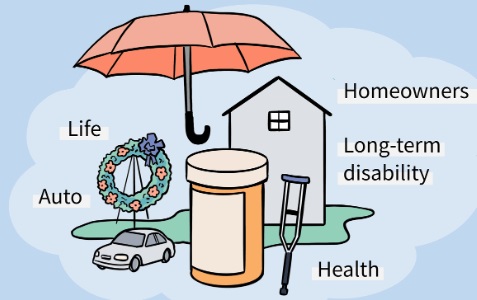
BoU data shows members’ deposits stood at Shs.884.96 billion, while shares and other equity amounted to Shs.865.61 billion and Shs.1.471 trillion
Kampala, Uganda | ISAAC KHISA | Local insurers in Uganda, just like their counterparts across Africa, are leveraging on bancassurance, agents and their physical outlets to increase insurance sales and deepen insurance penetration, although notable challenges are still limiting potential benefits.
The limited number of customers that can be accessed via commercial banks, agents and the insurer’s physical outlets, means that there remains need to go beyond bancassurance.
Latest statistics from the International Cooperative Alliance show that Uganda’s cooperative movement has more than doubled from 10,746 in 2011 to 21,346 registered cooperative societies in 2020, providing an enormous potential for savings and credit cooperative societies (SACCOS) to help drive the uptake of insurance services.
In addition, the report shows Uganda has 896 financial cooperatives with 1,002,530 members equivalent to 2% of the population.
Similarly, the Bank of Uganda data also shows that members’ deposits stood at Shs.884.96 billion, while shares and other equity, as well as loans, amounted to Shs.865.61 billion and Shs.1,471.63 billion, respectively, as of Sept. 30, 2022. These figures demonstrate the enormous potential and significance of the sector to the country’s insurance industry and the national economic and social development.
Insurance experts argue that SACCO members will be more willing to purchase insurance based on testimonials from their fellow members. Moreover, the government is revising the Microfinance Deposit Institutions (Registered Societies) Regulations, 2022, enabling the Bank of Uganda to license and supervise large SACCOs as mandated under the Tier 4 Microfinance Institutions and Money Lenders Act, 2016.
This development will enhance SACCOs’ corporate governance practices and strengthen public confidence in the sector, according to the Bank of Uganda Deputy Governor, Michael Atingi-Ego.
“We expect that regulated and well-managed SACCOs will attract funds, including from development partners, and consolidate the support and trust of members,” he said. “The enhanced capacity and richer resources will enable SACCOs to invest in effective systems and innovations, such as digital channels, to offer services at scale.”
Atingi-Ego says the central bank is already implementing the National Payments Systems Act 2020 to promote broader financial service delivery through safe, sound, and regulated payment system providers and FinTech firms.
He says embracing technology will enable SACCOs to improve service delivery at a potentially lower cost to customers.
“Harnessing the digital economy will open up additional economic opportunities for SACCOs, including income-generating activities, accessing new markets, and richer information for farming or business activities,” he said.
He says SACCOs provide a good avenue for the majority of the population to access various products and services such as insurance to members, especially those at the bottom of the economic pyramid.
Sande Protazio, the director planning, research & market development at Insurance Regulatory Authority of Uganda told The Independent in an interview that while regulations are still pending approval from the finance ministry enabling insurers to sell their products through SACCOs especially for the micro-insurance products, other insurers can still go ahead to use the current legal framework. He says as a regulator, their aspiration is to see that majority of the population have access to some sort of insurance cover and contribute to the national economy.
However, a sector expert argues that selling insurance through SACCOs isn’t enough. They argue that insurers need to keep an open communication with their customers not only acting on queries from existing customers but also involving frequent highlights of new developments from the insurer, perhaps of a new product being rolled out, some knowledge-based articles and even money management tips.
They also say insurers need to adopt an ex-gratia compensation to a policyholder in the event of uncertainty which is not insured by the insurer to enable them to recover. This is because SACCOs have benevolent schemes where aggrieved members can receive some compensation or benefits without withdrawing any cash from their accumulated savings or deposits.
Currently, Uganda’s insurance penetration stands at less than 1% while South Africa, Namibia, Lesotho and Kenya’s insurance penetration stand at 16%, 6.6%, 4.7% and 3.4%, respectively.
Nevertheless, the country’s insurance industry has recorded progress owing to a strong legal framework and a supportive regulator.
Latest statistics from the Insurance Regulatory Authority of Uganda, show that gross written premiums for the 29 non-life and life insurers more than quadrupled over the past decade from merely Shs240 billion in 2010 to Shs 1.18 trillion in 2021.
The life insurance business’ contribution to the gross written premiums more than tripled from merely 10% to 33% during the same period under review, signalling increasing customer appetite for insurance policies, especially education, whole life insurance, and health among others.
 The Independent Uganda: You get the Truth we Pay the Price
The Independent Uganda: You get the Truth we Pay the Price





